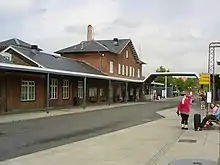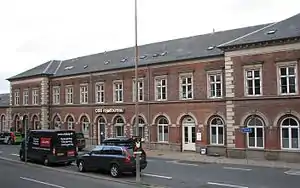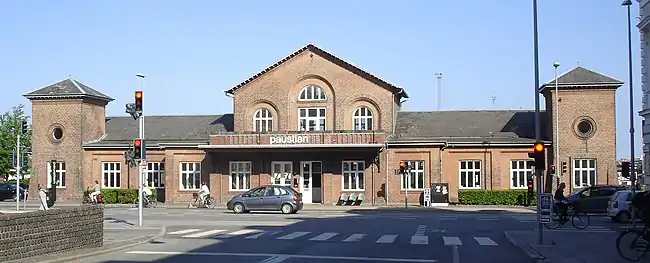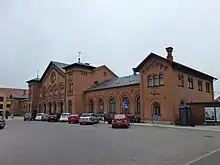Niels Peder Christian Holsøe | |
|---|---|
 | |
| Born | 27 November 1826 Øster Egesborg, Denmark |
| Died | 1 January 1895 (aged 68) Copenhagen, Denmark |
| Nationality | Danish |
| Occupation | Architect |
| Buildings | Helsingør Station |
Niels Peder Christian Holsøe (27 November 1826 – 1 January 1895) was a Danish architect, known for the numerous railway stations he designed across Denmark in his capacity of head architect of the Danish State Railways.[1]
Biography
Holsøe was born at Øster Egesborg near Vordingborg on the island of Zealand, Denmark. He was the son of pastor Lauritz Christian Holsøe (1789-1862) and Vilhelmine Euphrosyne Margrethe, née Feddersen (1797-1871). He was initially trained as a mason, and later was a private student of Gustav Friedrich Hetsch (1788–1864). Afterwards he attended the Royal Danish Academy of Fine Arts building school and ornament school from 1842 to 1849 and again from 1851 to 1852, interrupted by his participation in the First Schleswig War.[1]
He designed a number of public buildings, especially railway stations in cities including Silkeborg (1871), Varde (1874), Ringkøbing (1875), Ribe (1883), Svendborg (1876), Aarhus East (1877), Thisted (1881), Faaborg (1882), Assens (1883–84) and Helsingør (with Heinrich Wenck; 1889–91). In addition, he designed the Hotel Marienlyst in Helsingør (1860–61), and Ugerløse Church (1875-76), and was responsible for the renovation of Aarhus Hospital (1878–89).[1][2]
From 1891, when Holsøe was afflicted with an eye disease, Heinrich Wenck gradually took over some of his responsibilities with title of First Architect, before succeeding Holsøe as Chief Architect in 1894. Holsøe died aged 68 on 1 January 1895 in Copenhagen. He is buried at Frederiksberg Ældre Kirkegård.
Gallery



 Ribe railway station
Ribe railway station

 Faaborg railway station
Faaborg railway station





See also
References
- 1 2 3 Vigand Rasmussen. "N.P. Holsøe". Kunstindeks Danmark & Weilbach Kunstnerleksikon. Retrieved June 29, 2021.
- ↑ "Østbanegården". aarhuswiki.dk. Retrieved June 29, 2021.